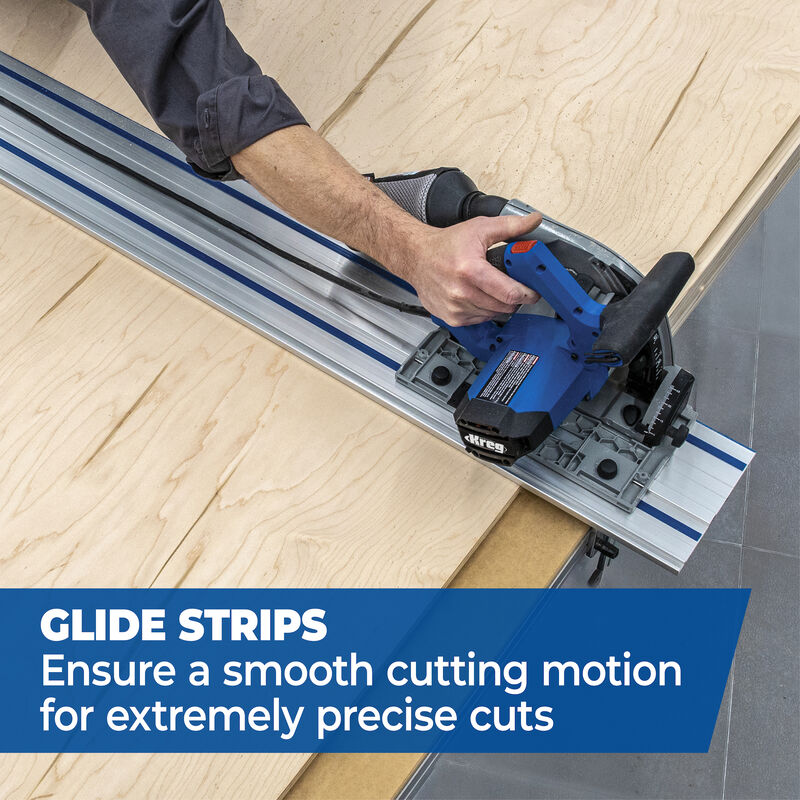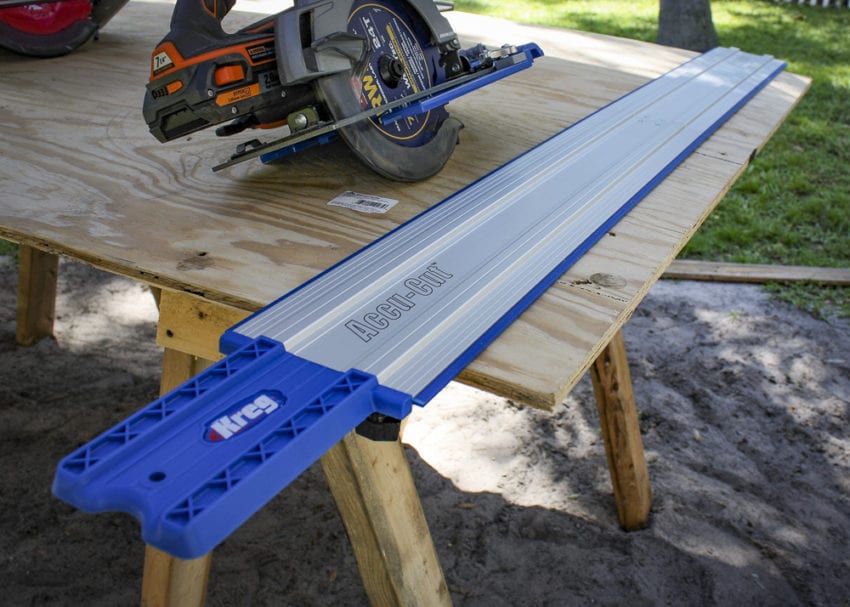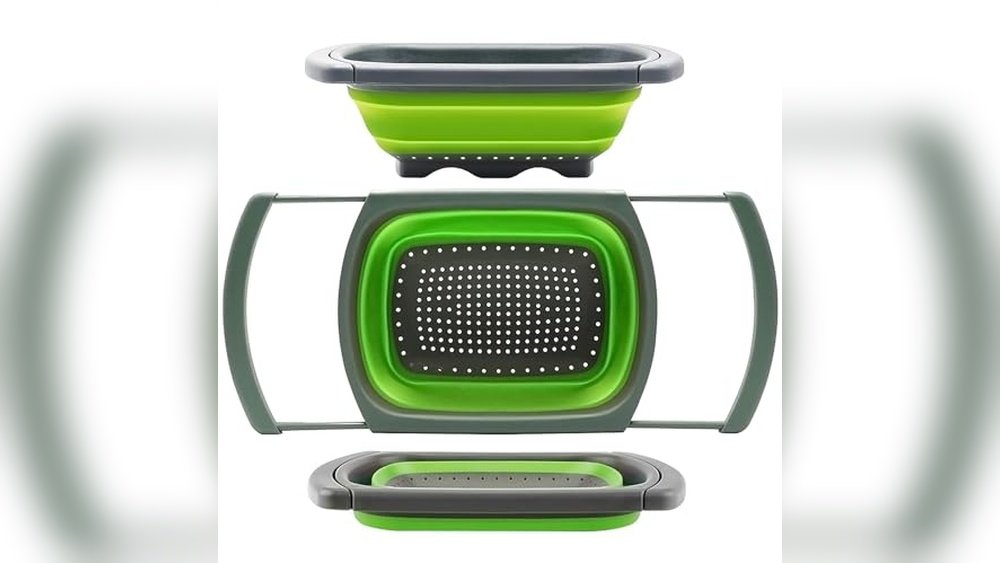Imagine effortlessly making precise, straight cuts in your woodworking projects. The Kreg Track Saw is your key to achieving professional-grade results with ease.
If you’ve ever struggled with cutting large sheets of material or finding the perfect tool for straight lines, you’re in the right place. By learning how to use the Kreg Track Saw, you can transform your DIY endeavors into masterpieces.
Whether you’re a seasoned craftsman or just starting out, this tool will elevate your work to new heights. You’ll discover the secrets to mastering the Kreg Track Saw, ensuring your projects are not only successful but enjoyable. Stick around, because the tips and tricks you’re about to uncover will change how you approach your woodworking forever.

Credit: www.youtube.com
Choosing The Right Kreg Track Saw
Choosing the right Kreg Track Saw can make all the difference in your woodworking projects. Whether you’re a seasoned carpenter or a DIY enthusiast, selecting the appropriate tool ensures precision and enhances your work’s quality. But how do you determine which Kreg Track Saw suits your needs?
Understanding Your Needs
Before diving into the technical specifications, reflect on your projects. Are you cutting large sheets of plywood, or are you focused on intricate cuts for cabinetry? Identifying your primary use will narrow down your options.
Evaluating Features
Kreg Track Saws come with various features, from adjustable speed settings to dust collection systems. Consider which features are essential for your work environment. If you’re working indoors, a dust collection system could be invaluable.
Comparing Models
Kreg offers different models, each tailored for specific tasks. Compare models side by side. A table showcasing features, price, and user reviews can help you make an informed decision.
| Model | Features | Price | User Reviews |
|---|---|---|---|
| Kreg ACS2000 | Speed control, dust collection | $300 | 4.5/5 |
| Kreg ACS3000 | High power, precise cutting | $450 | 4.7/5 |
Considering Budget
Your budget plays a crucial role in your decision. While it’s tempting to go for high-end models, consider if you’re paying for features you won’t use. Balance your budget with the features you truly need.
Seeking Recommendations
Sometimes, the best insights come from fellow woodworkers. Ask friends or join online forums to gather opinions. You might discover a model that perfectly fits your requirements.
Trying Before Buying
If possible, test the saw before purchasing. Feeling the tool in your hands can provide insights that specifications alone can’t. Many stores offer demos—take advantage of them.
Choosing the right Kreg Track Saw isn’t just about ticking boxes. It’s about finding a tool that feels right and fits your style. Take the time to explore your options, and you might find the perfect companion for your woodworking adventures. Have you found the ideal saw yet, or are you still on the hunt?
Essential Safety Precautions
Using a Kreg Track Saw can greatly enhance your woodworking projects. Safety should always come first. Understanding essential safety precautions is crucial. These measures ensure you work efficiently and safely.
Understanding Personal Protective Equipment (ppe)
Always wear safety goggles when using the Kreg Track Saw. They protect your eyes from debris and dust. Ear protection is equally important. The saw can be loud during operation. Use earplugs or earmuffs to protect your hearing. Gloves can also be helpful. They provide a better grip and protect your hands.
Proper Handling And Setup
Ensure the saw is unplugged before making adjustments. This prevents accidental starts. Secure the material firmly before cutting. It should not move during the process. Use clamps if needed. Check the track alignment. It should be straight and secure. This ensures accurate cuts.
Maintaining A Safe Work Environment
Keep your workspace clean. Remove any clutter that might cause accidents. Ensure good lighting around your work area. You need to see clearly while cutting. Have a stable work surface. It should support both the saw and the material.
Understanding The Saw’s Features
Familiarize yourself with the saw’s features. Know the location of the emergency stop. Understand the blade guard mechanism. It should function properly to protect you. Regularly check the saw for any damage. Replace worn-out parts promptly.
Training And Practice
Read the user manual thoroughly. It contains important safety information. Practice with scrap materials before starting a project. This helps you gain confidence and improve your skills. Never rush while using the saw. Take your time to ensure safety and precision.
Setting Up The Track Saw
Setting up a Kreg Track Saw involves aligning the track for precision cuts. Ensure the saw’s blade is sharp and properly secured. Adjust the depth for different materials, and check the guide rail for smooth operation.
Setting up your Kreg Track Saw is a crucial step that can make or break your woodworking project. Imagine a world where each cut is precise, smooth, and exactly what you envisioned. It all begins with a meticulous setup. Whether you’re a seasoned craftsman or a DIY enthusiast, understanding how to properly set up your track saw can save you time, frustration, and material. Let’s dive into the essential steps for setting up your track saw effectively.Aligning The Track
The first step in setting up your track saw is ensuring your track is perfectly aligned. Misalignment can lead to inaccurate cuts, which can be frustrating. Place the track on your workpiece and ensure it’s parallel to the cutting line. Use a measuring tape to double-check the alignment. Have you ever noticed how a slight shift can change everything? This attention to detail ensures that your cuts are precise. Take your time with this step; it’s worth it.Adjusting The Depth Of Cut
Once your track is aligned, the next step is to adjust the depth of cut. The depth should be set slightly deeper than the thickness of the material you’re cutting. This ensures a clean cut without damaging your workbench. Adjusting the depth may seem trivial, but have you ever tried cutting through a piece only to realize it’s not deep enough? Use the depth adjustment knob on your saw to set the blade depth accurately. Remember, the right depth not only protects your tools but also prolongs their life. How often do you check the depth before making a cut? It’s an easy habit that pays off big time.
Credit: www.kregtool.com
Mastering Basic Cuts
Discover the art of using a Kreg Track Saw for precise cuts. This tool helps achieve clean lines in woodwork effortlessly. Perfect for beginners aiming to enhance their cutting skills with ease.
Mastering basic cuts with a Kreg Track Saw can transform your woodworking skills from amateur to adept. Whether you’re crafting a simple shelf or building a complex piece of furniture, understanding these fundamental techniques will enhance your precision and efficiency. Let’s dive into the essentials of making straight and rip cuts that are clean and accurate.Making Straight Cuts
Straight cuts are the backbone of many woodworking projects. With your Kreg Track Saw, you can achieve perfectly straight lines without a table saw. Begin by securing your workpiece firmly. Align the track with your cutting line, ensuring it’s straight and stable. This is crucial for accuracy. As you guide the saw along the track, keep a steady pace. Rushing might lead to uneven edges. Remember, patience pays off in precision.Performing Rip Cuts
Rip cuts involve slicing along the grain, typically to adjust the width of a board. This can be intimidating, but your Kreg Track Saw makes it manageable. Measure the width you need and mark your board. Position the track parallel to your mark, ensuring it’s securely clamped to avoid movement. When cutting, maintain a consistent speed. An even tempo helps prevent the blade from binding. If you’re hesitant, practice on scrap wood first. Wouldn’t it be better to make mistakes on test pieces rather than your final project?Advanced Cutting Techniques
For woodworking enthusiasts, precision and creativity are vital. The Kreg Track Saw offers both. Advanced cutting techniques elevate projects with greater accuracy. Whether crafting furniture or decorative items, mastering these techniques enhances craftsmanship. Let’s explore how to make bevel cuts and angled lines effectively with your Kreg Track Saw.
Creating Bevel Cuts
Bevel cuts add dimension and style to woodworking projects. Adjust the saw’s bevel angle to your desired degree. Ensure your workpiece is secure. Use the track to guide your saw along the marked line. This method guarantees a clean, precise cut. Regular practice will improve your skill and confidence. Bevel cuts can transform basic projects into professional pieces.
Cutting Angled Lines
Angled lines are essential for complex designs. First, measure and mark the angle on your workpiece. Align the track with your marked line. Adjust the saw blade to match the angle. Begin cutting slowly to maintain control. The Kreg Track Saw’s guide rail keeps the saw steady. This results in a smooth, accurate cut. Mastering angled lines opens up new design possibilities.
Maintaining Your Track Saw
Proper maintenance of your Kreg Track Saw ensures its longevity and performance. Regular care prevents wear and tear, keeping your tool efficient and reliable. Investing time in maintenance saves money and ensures smooth cuts every time.
Cleaning And Lubrication
Dust and debris can affect your track saw’s performance. After each use, wipe the saw with a soft cloth. Ensure all moving parts are free from sawdust. A clean saw operates smoothly and extends its lifespan.
Lubrication is key for moving parts. Use a light machine oil on the track and blade. This reduces friction and prevents rust. Avoid over-lubricating, as this can attract more dust.
Replacing Blades
A dull blade affects cut quality. Regularly check the blade for sharpness. Replace it if it starts tearing wood instead of cutting.
Ensure you use the correct blade for your material. Installing a new blade is straightforward. Follow the manufacturer’s instructions for safe replacement.
Keep spare blades handy. This ensures you never experience downtime during important projects.
Troubleshooting Common Issues
Troubleshooting issues with your Kreg Track Saw might seem daunting at first. However, with a bit of patience and know-how, you can tackle common problems efficiently. Whether it’s dealing with misalignment or addressing power issues, understanding these challenges will help keep your projects on track. Let’s dive into some practical solutions.
Dealing With Misalignment
Misalignment can throw off your cuts and waste material. If you notice uneven edges, check the saw’s alignment first. Make sure the track is firmly secured. A loose track can lead to skewed cuts.
Inspect the blade alignment. A blade that’s not parallel to the track will cause issues. Adjust the blade as needed, following the manufacturer’s guidelines.
Have you double-checked the surface? An uneven surface can affect alignment. Use a level to ensure your work area is flat. A simple adjustment can make a big difference in your results.
Addressing Power Problems
Power issues are frustrating, but often easy to solve. If your saw doesn’t start, check the power cord for damage. Sometimes, a simple swap of an extension cord can fix the problem.
Is the saw’s motor struggling or stopping? It might be overloaded. Ensure you’re using the correct blade for your material. A mismatched blade can cause strain on the motor.
Have you considered the power outlet? Sometimes, the issue is external. Test the outlet with another device to confirm it’s working. This small step can save you a lot of troubleshooting time.
Have these tips improved your Kreg Track Saw experience? Troubleshooting can be straightforward with the right approach. What unexpected insights have you discovered during your projects? Share your thoughts in the comments!

Credit: www.protoolreviews.com
Enhancing Precision And Efficiency
Enhancing precision and efficiency with a Kreg Track Saw is essential for any woodworking project. This tool promises accurate and clean cuts, saving time and effort. By focusing on key techniques, users can maximize their track saw’s potential. Let’s dive into some effective strategies that will help you achieve the best results.
Using Clamps Effectively
Clamps play a crucial role in ensuring stability during cuts. Always secure the track to the material with reliable clamps. This prevents any unwanted movement, ensuring straight, precise cuts. Choose clamps that fit well and hold tightly. Remember, a stable setup reduces the risk of errors.
Position the clamps at both ends of the track. This distributes pressure evenly, keeping the track flat. Avoid over-tightening, as it can damage the work surface. Proper clamping leads to smoother operations and finer results.
Optimizing Track Placement
Track placement is vital for achieving desired cuts. Begin by marking the cutting line on your material. Align the track edge with this line for accuracy. Ensure the track is clean and free from debris. This helps maintain a smooth glide during cuts.
Consider the path of the saw blade before starting. Ensure the track extends beyond the material edges for complete cuts. This prevents blade binding or incomplete cuts. Adjust the track position as needed for different cuts. Experiment with placement to find what works best for your project.
Frequently Asked Questions
How Do You Use The Kreg Track Saw?
Position the track on the workpiece. Secure it using clamps. Adjust the saw depth and angle. Slide the saw onto the track. Turn on the saw. Guide it steadily along the track for a precise cut. Always wear safety gear.
How To Align Kreg Track Saw?
Align the Kreg track saw by positioning it parallel to the cutting line. Adjust the track clamps securely. Ensure blade is perpendicular to the surface. Test with a scrap piece to check accuracy.
How Good Is Kreg Track Saw?
The Kreg track saw offers precise, straight cuts and is easy to use for both beginners and professionals. It boasts a sturdy build, user-friendly design, and reliable performance, making it a popular choice for woodworking projects. Its adjustable features enhance versatility, ensuring accurate cuts on various materials.
How To Joint With A Track Saw?
To joint with a track saw, secure the track firmly on the wood. Align it for a straight cut. Use clamps to prevent movement. Guide the track saw along the track smoothly. Ensure the blade is sharp for clean joints.
Follow safety precautions during operation.
Conclusion
Mastering the Kreg Track Saw empowers your woodworking projects. It’s simple and efficient. Follow the steps carefully. Precision improves with practice. Always prioritize safety during use. Remember, the right tools make a difference. Experiment with different cuts. This saw offers flexibility.
Make sure your workspace is organized. Clean tools ensure better performance. With these tips, you’re ready to tackle projects confidently. Happy woodworking!



